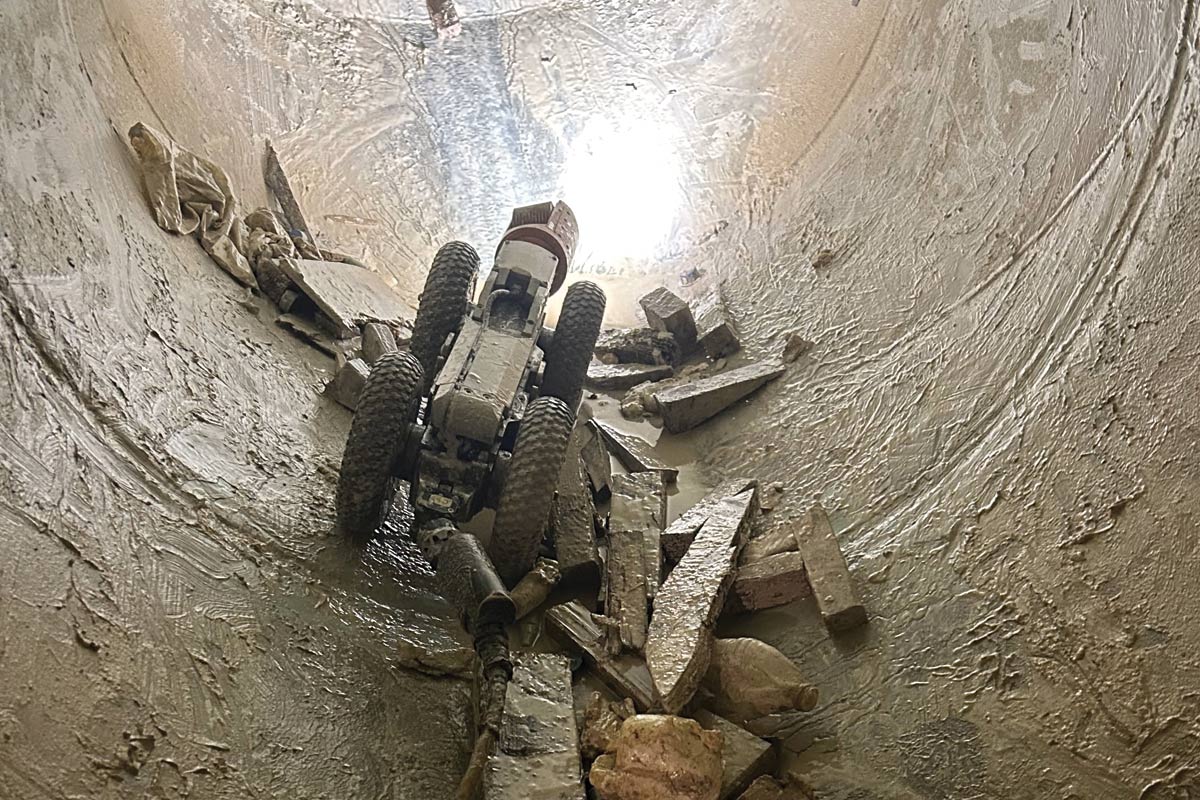Lateral Rehab Success at North American Brewery

The facility is the oldest owned by Molson having been founded 222 years ago. Due to the plant’s age, size and complexity, tearing up reinforced concrete floors, dismantling plant industrial equipment and other issues attendant with conventional dig-and-replace methods of underground pipe rehabilitation, Molson opted for a trenchless lateral repair solution.
The trenchless technology selected — Formadrain — has also been utilized in other industrial plants such as the project at the hydrogen peroxide production plant owned by a subsidiary of ATOFINA Worldwide, the fifth largest chemical company in the world.
Background

Molson is the second oldest company in Canada after the Hudson’s Bay Co. The company brews and markets a number of the most popular brands of beer in Canada. Domestic labels include Molson Canadian, Molson Export, Molson Dry, Pilsner, Rickard’s and Creemore Springs. Through partnerships with other major brewers, Molson Canada also offers several world-renowned brands, including Coors Light, Corona, Miller Genuine Draft, Foster’s Lager and Tiger. Molson employs 3,000 people in Canada and operates six breweries in locations across the country (Vancouver, Toronto, Montreal, Moncton and St. John’s), including the Creemore micro-brewery in Ontario.
The Situation
Molson’s production facilities are expansive and produce at a very high volume on a daily basis. There are hundreds of thousands of feet of piping and tens of millions of dollars in industrial infrastructure. Underneath the plant is a network of cast iron pipes, many decades old and suffering from premature corrosion inherent in the beer-making process. When these needed repairs recently, shutting the plant down was not a viable option due to production demands. Moreover, repair costs for traditional repairs would have been extensive as the plant floor would have to be dug up.
To make matters worse, there were areas where it was simply impossible to dig. Moreover, there are historical factors to consider as the building itself is more than two centuries old, and the company wanted a green solution to reduce environmental impact by avoiding factors that go along with digging.
To overcome these problems, Molson chose a no-dig solution. In addition to no manufacturing downtime or loss of production, using a no-dig option meant significantly reduced repair costs: no concrete floors to break and replace, no plant machinery to relocate, no cleaning afterwards, no environmental pollutants, etc.
The Project
After a thorough review, Molson’s maintenance manager selected Formadrain no-dig technology, which has been in use since 1994. This process utilizes a liner with an epoxy formulation that is inserted inside the existing pipe (it’s a pull-in-place system), but with minimal loss in diameter. Another unique feature is that the new pipe, once installed, is injected with pressurized steam allowing for a short curing time of about two hours for the industrial liner.
The Molson project involved repairing an extensive sewer network of cast iron pipes suffering from heavy corrosion — some pipes had no bottom in several spots.

As no pictures were allowed inside the plant, to protect trade secrets, a sketch was created (see the diagram on page 35) that shows the large cellar, including 8-ft diameter by 25-ft long beer tanks.
The repairs involved lengths of pipe up to 90 m with diameters of 150 and 100 mm. The badly corroded pipes include eight “Y’’ connections (floor drain and lateral connections) that had to be renewed.
These problems produced maintenance issues in the form of pipes backing up — a nightmare for a brewery.
The existing laterals were originally made of cast iron, and as noted, badly corroded with no bottom in some sections of pipe. Additionally, there were pipes that were stopped up with broken glass, beer bottle caps and other debris. There were also structural blockages including concrete in the 8-in. diameter main that needed to be removed.
Rehabilitation
This project involved rehabilitating 14 laterals and seven “Y” connections (which were lined with Formadrain’s Lateral Main Connection technology or LMC). It was done over a month’s time and presented various challenges — the most prominent being that Molson simply could not stop operations. These were met with success and work continued without interrupting production.
For this project a Novalac Epoxy resin was utilized, which was especially designed for industrial purposes. In fact, the liner had chemical tolerances that exceeded those of brewery, with a life expectancy of 50 years.

Prior to installation, the existing pipes were properly prepared, something as important as the lining itself. All lining, to be successful, requires three things: preparation, preparation and preparation.
Preparations began with proper and searching camera inspections to assess the actual pipe diameter, that all laterals are properly located to avoid back-ups, etc. Preps also included deep cleaning (with standard and high-water pressure equipment) to remove some soft and other very hard residues, i.e. concrete.
Once all preparation was done, the pipes were lined with a process that includes steam curing. This allows for excellent quality control during the installation process, as well as producing a liner with an elevated chemical resistance (which simply would not be possible without a controlled heat source).
It was the combination of the unique industrial formulation, which is suitable for strong acids, caustics and strong hydrocarbons, and the steam curing process that made the project possible. The project was completed with 100 percent client satisfaction. There was no loss of production and all affected infrastructure was left intact.
Stephane Therrien is vice president of Formadrain Inc.




